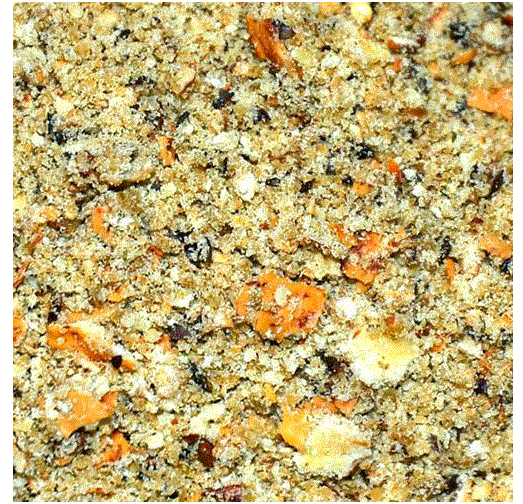We have seen all manner of trends come and (sometimes) go in the bait business and the latest fad – or is it much more than that? – is boiled bait based on nut products.
There has been a lot of talk in the press and on the forums about these baits so I thought I would have a little play around with a few ideas myself. I decided to start with tiger nuts, arguably the most effective and certainly the most popular of all the nut baits.
First step was to gound 250g of tigers in a heavy mortar and pestle. This produced a fairly coarse powder that would be fine for groundbait, the Method or stick mixes, but was too coarse for a boiled bait.

So now I needed to reduce the ground tiger nuts still further and for this I called once again upon the services of my ancient but hard working coffee grinder. This produced a very satisfactory powder about 30-mesh in size.

I knew that pure tiger nut powder would not hold together without the addition of some kind of binder, so I chose an egg biscuit-based birdfood, namely 250g of Haith's Red Factor. This was also given the coffee grinder treatment to reduce the original product, which is quite gritty, to a 30-mesh size powder. The two powders were then mixed together 50/50 in a poly bag to ensure a decent blending

I added 2g of a wonderful product called Cajoler from Nutrabaits to give a little touch of attraction. This product has been around in one form or another for ages but is largely overlooked by the angling fraternity. I cannot understand why as it is very effective.

I broke the eggs in the mixing bowl and slowly added the blended powders and the attractor and then mixed everything together to form a stiffish paste. At this stage I was looking to hand roll so the paste needed to be of a consistency that would roll into sausages without breaking up on the tabletop.

I worked the paste into suitable-sized sausages prior to cutting and rolling into round paste balls prior to boiling.

The baits were then boiled for three minutes on a hard boil.

The baits looked really good when I lifted them from the boiling water, and I was very pleased to see that they had retained their shape without splitting, the mark of a good base mix.

Next step was to dry the residual dampness off the still-warm baits, and for this I used a hair drier. This helps drive off any dampness and also helps the skinning process. Once dried, the baits were firm and had darkened nicely.

Finally the baits were left to dry for 24 hours, during which time the skin toughened up still further but the baits were still nice and squidgy to the touch (technical term!). I think you can see for yourself just how nicely these baits have turned out by looking at one when cut in half. Still moist and chunky but firm enough to stand up to a throwing stick and casting.

Next step was to test the bait in water to see if it broke down too quickly; I therefore popped a single bait into a glass ramekin along with some bottled water.

I kept an eye on this single bait and noted that it lost colour quite quickly taking on a washed-out look on which I know many of you are quite keen. This happened quite quickly after just two days in soak.

I removed the bait after a week in soak and noted that it showed few if any signs of deterioration, though the water had gone a bit manky, hardly surprising in such a small volume. Overall apart from the loss of colour it smelt fresh and relatively powerful. However, the acid test came when I cut the bait in half. Again I was pleasantly surprised to note only the loss of colour. The bait still retained a fair bit of olfactory attraction and though, yes, it had softened quite a lot, the exterior still held together nicely and the inside held no hint of spoiling.

Well happy...It worked!
Written by Ken Townley

